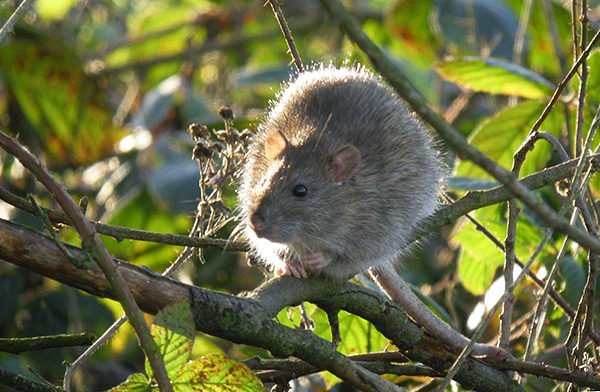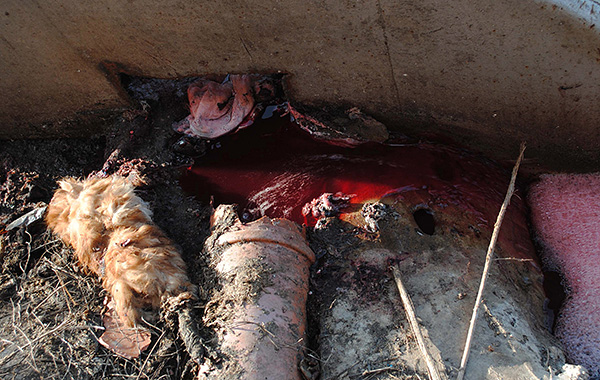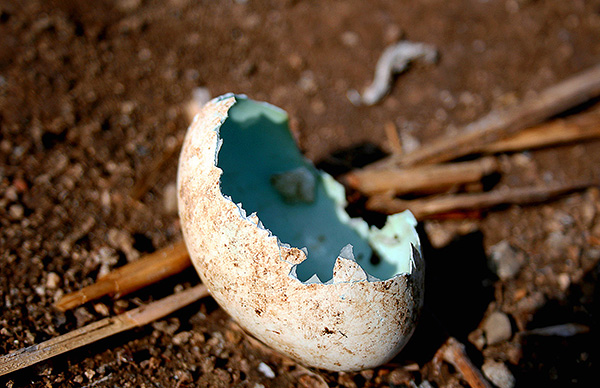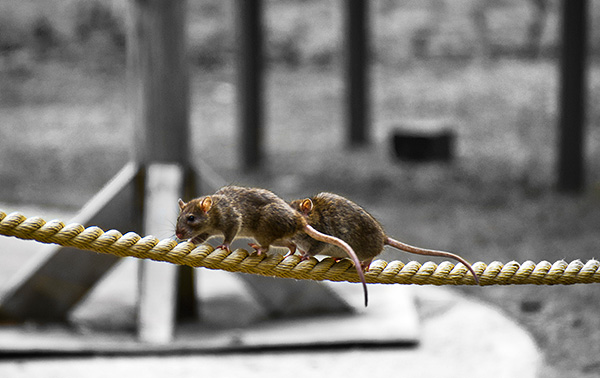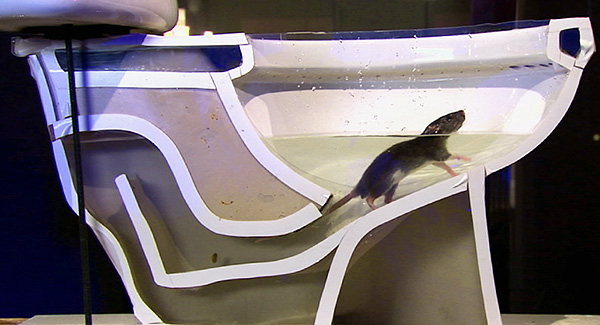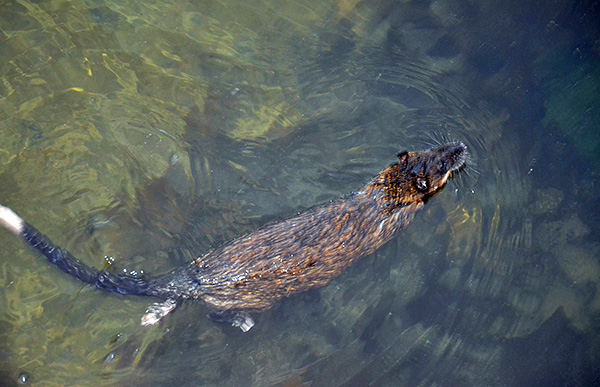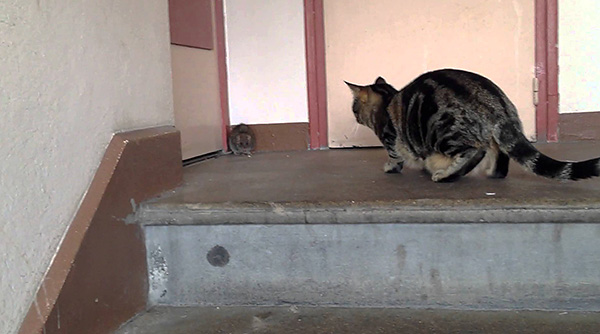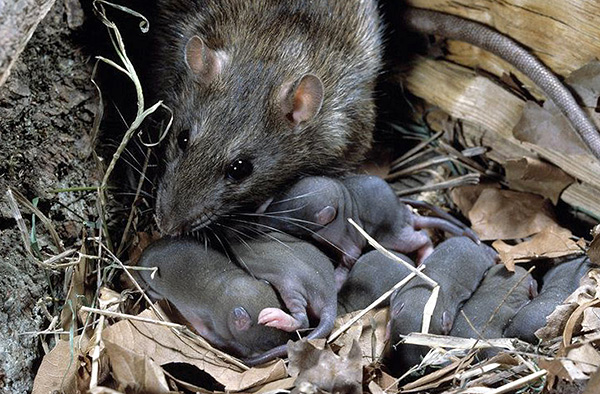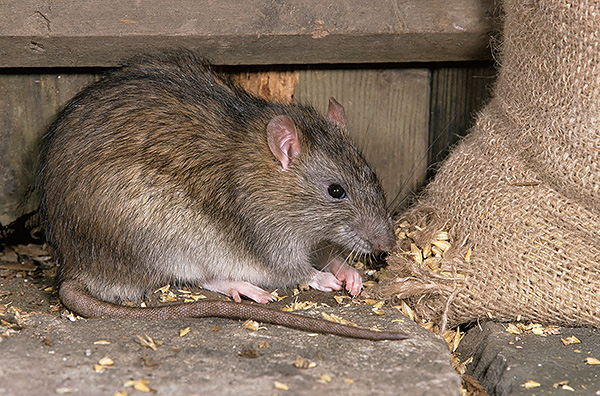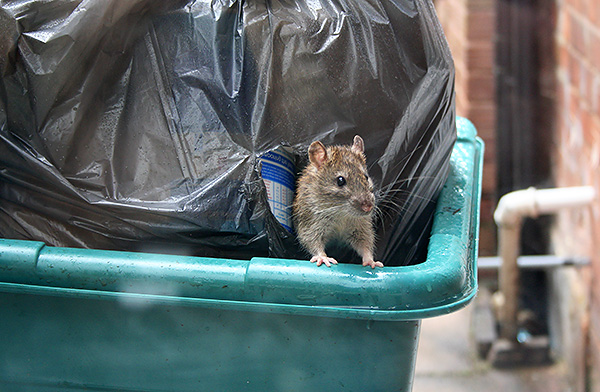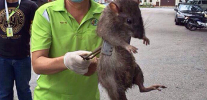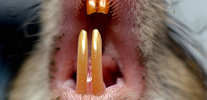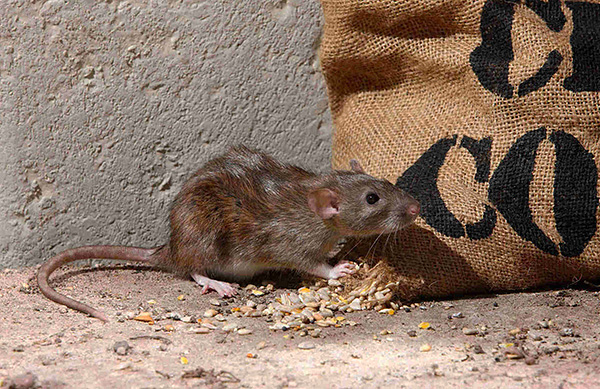
Next you will learn:
- Due to what, gray rats managed to become one of the most common and numerous mammals on Earth;
- What unique abilities these animals possess and what they are capable of in case of danger;
- Where and how pasyuki live and why they manage to safely squeeze black rats out of their habitats;
- What do gray rats eat and how long can they live without food and water;
- What diseases do these rodents suffer (in addition to the well-known plague, which can be infected by a bite of rat fleas);
- And finally, what are the usefulness of gray rats for humans.
There is probably no adult in the world who does not know what a gray rat looks like. Indeed, this rodent is noticeable and famous: it can be found in the basement, in the porch, in the attic or in the courtyard of an apartment building, it often turns out to be the hero of various films (usually - as an embodiment of abandonment and dirt), and being tamed by a person, attracts the surprised looks of children sitting in a cage at the bird market or at the pet store.
It may even seem strange: do gray rats - so unprepossessing, ugly and lacking outstanding physical data - deserve to be such famous human neighbors?
It turns out they deserve it. The gray rat, she is a pasuk - one of the most numerous mammals on Earth. According to scientists, the number of rats around the world is about twice as large as the number of people (in large cities around the world, there is approximately one rat per citizen).
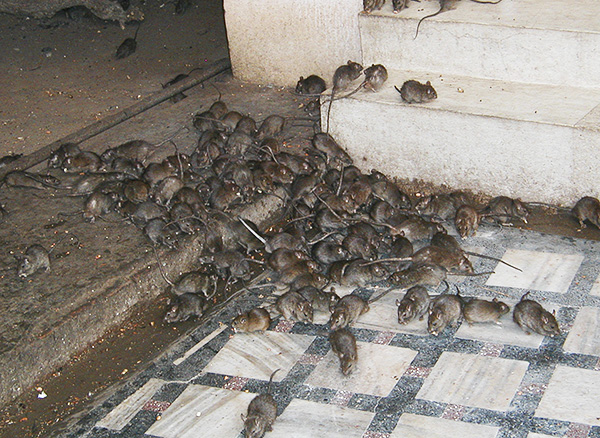
In addition, the gray rat is a rodent strongly attached to humans. In the largest numbers, representatives of this species live either in structures built by people or in cultural landscapes. And this means that, willy-nilly, animals fall into the eyes of a person, affect his economic activity, cause harm and can even be dangerous. It is almost impossible not to notice them or not pay attention to them.
Due to its high abundance and craving for proximity to humans, the gray rat is one of the most significant animals for human civilization in general. Every year, all over the world, these animals destroy millions of tons of grain, cause thousands of people to become infected with dangerous diseases, and sometimes even accidents and technological disasters occur due to their activity. Huge amounts of money are spent annually to combat them and to eliminate the consequences of their life.
On the other hand, rats do more for science than any other kind of animal. Millions of these animals are tortured and die every year in laboratories, giving people new knowledge in the fields of medicine, anatomy and physiology, helping to test numerous products and medicines.
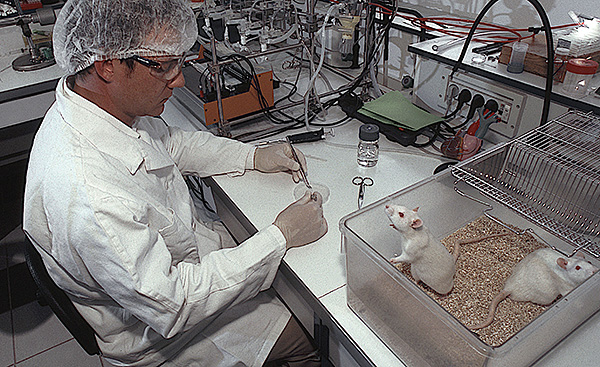
In addition, rats are very common pets. White, spotted, red and even gray-blue animals, born and raised in captivity, often become real family members, completely tame and unpretentious. Moreover, due to their quick wit and activity, they are no less interesting than the more traditional human companions - cats, dogs, or, for example, parrots.
We can say that rats, together with people, own this world. Moreover, a person who is almost ready to colonize other planets and, it would seem, having conquered nature on Earth, is powerless against buzzards: these animals breed right next to him, interfere with his life, take away food from him and by his very existence seem to mock his power.
What helps them to be so omnipresent and indestructible? Below we will consider this in more detail ...
Rodent appearance
The general appearance of the animal is known to everyone: the gray rat is a medium-sized rodent, while of all the rats in Russia it is the largest. Only gophers, groundhogs, beavers, nutria, and other rodents that are not rats are larger than it.
In length, the animal reaches about 19-24 cm, the tail is 12-19 cm long. It is noteworthy that the tail of a gray rat is never longer than the body, which is one of its differences from a black rat.
Photo of a large gray rat:
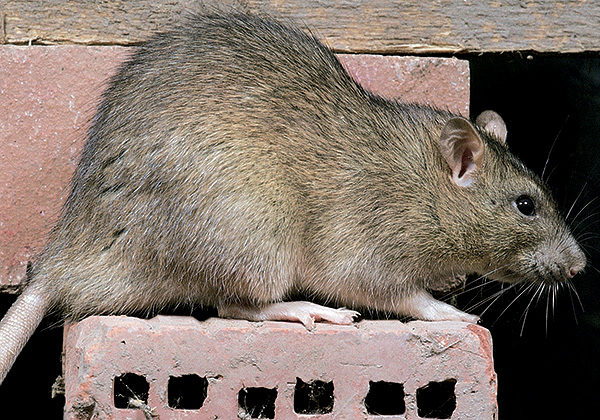
The color of the pasuka's coat is usually not completely gray, but brownish, although young cubs are gray, and as they grow older, they develop a redhead. The abdomen of the animal is light, almost white. Very rarely - in about one animal from 1500-2000 - pure black individuals are found. Nevertheless, despite their coloration, from the point of view of species, they continue to remain typical gray rats.
On a note
In pasuk fur there is a large number of core hairs longer than all the others. Therefore, gray rats often look somewhat disheveled and “untidy” (as if dirty).
In the picture - a gray rat at a meal:
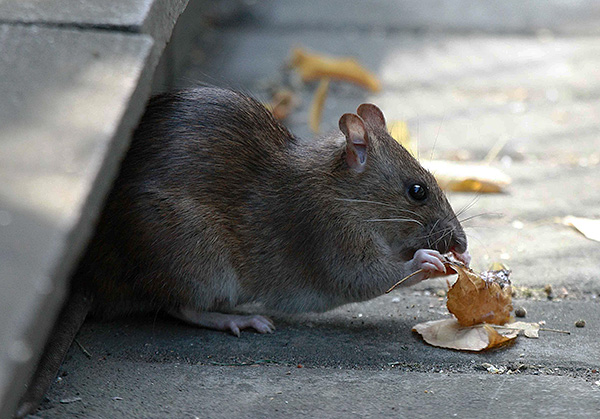
The tail of a rat is an object of disgust for many aesthetes. It is naked, covered with sparse short transparent hairs and a roughened epidermis resembling scales.
Gray rats quite easily differ from their relatives, with whom they live in different parts of the range. For example:
- Reliable species determination of gray and black rats is carried out by measuring the mass and size of the body, as well as the length of the tail: the pasuk is larger, heavier, its tail is always shorter than the body. The appearance of the animal is also evaluated - the eyes of the black rat have larger eyes and ears, the muzzle is elongated, and the tail is more “fluffy”. Specialists also know how to distinguish these species according to the characteristics of the skeleton. For example, the pasuk have fairly straight parietal crests of the skull, while the black rat has them strongly bent. It is noteworthy that there are light populations of black rats whose representatives are very similar in color to their gray counterparts;
- The pasuk differs from the Turkestan rat in coarser fur and large sizes.
The photo below shows a gray rat:
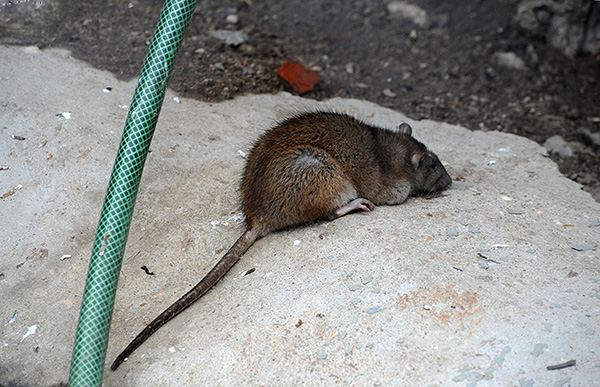
And here is black:
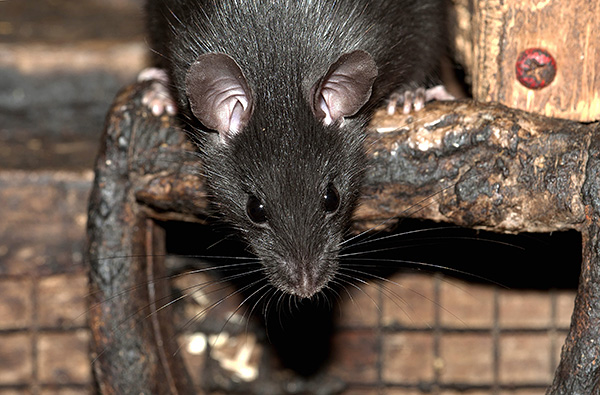
And the look of the gray rat itself is heterogeneous. There are at least two of its subspecies - Rattus norvegicus caraco, indigenous, smaller, distributed in Transbaikalia, the Far East, Mongolia, Korea and East China. And the main one is Rattus norvegicus norvegicus, which is found in all other parts of the range.
Interestingly, the Latin name for the gray rat is a consequence of a scientific error. This species was described by the British zoologist John Birkenhout, who noticed that Pasyukov most in port cities. He decided that the animals sailed to England on ships from Norway, and suggested that it was in Norway that their natural habitat is located.
As a result, he gave the animals the species epithet "norvegicus". The irony is that in reality at that time the gray rats had not yet entered Norway, and most likely they came to England from Denmark.
Nevertheless, the subspecies that have spread throughout the world are called the same epithet, because it was described for the first time, for science it is nominative, and by tradition its subspecies name duplicates the species. Such a forced double mistake ...
On a note
Today, taxonomists believe that domestic and laboratory rats have developed a sufficient number of specific features to separate them into a separate subspecies.
On agricultural land in Russia, a gray rat can be confused with some other animals. Most often, a water vole is taken for it - a rodent of the hamster family, really similar to a pasuk in color and body size. But the water vole has shorter legs, and the head is even more massive and less elongated.
Photo of a water vole:
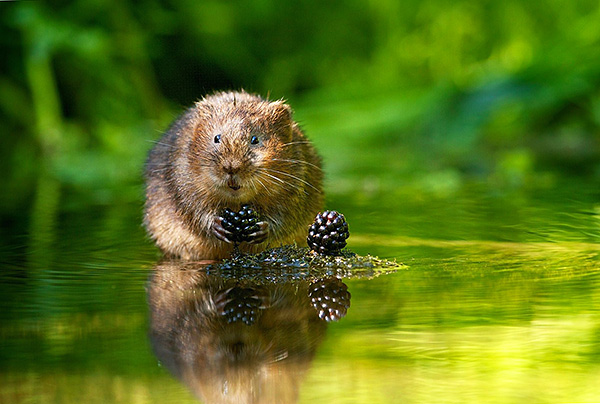
And for comparison - a gray rat:
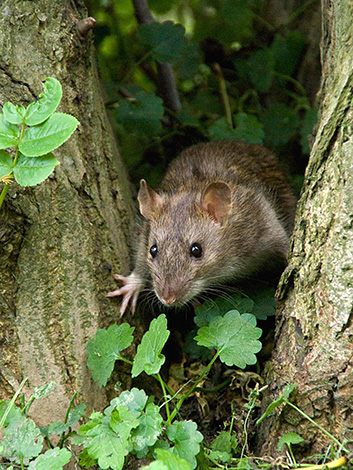
In the northern regions of rats (especially young), they are sometimes confused with voles or lemmings.Upon closer inspection, such errors are quickly detected: rats are usually larger, have a slimmer body and a long tail.
The errors themselves are related to the fact that animals are noticed by the edge of the eye when they make their way in the grass or quickly hide in holes. Moreover, the farther to the north, the less often representatives of this species are found outside of a person’s dwelling, which means that the animal caught somewhere in the taiga is most likely not a rat.
The lifestyle and basic habits of a gray rat
The lifestyle and behavior of rats can be described with sufficient accuracy in two words: plasticity and versatility.
Indeed, the main feature of these animals is their highest adaptability to living conditions and the rhythm of human life. For example, gray rats living in nature or in houses lead a twilight and nocturnal lifestyle, and they prefer to spend daylight hours in their shelters. Individuals living in agricultural enterprises often lead a daily life, collecting grain that crumbles during the day, and rest at night when the garbage is removed.
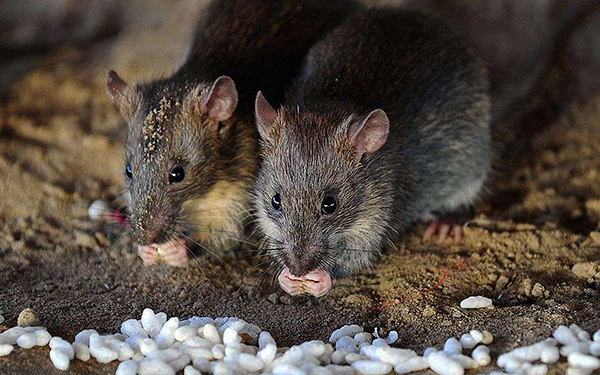
On a note
Moreover, two rats living in the same house can adhere to a different activity schedule - night and day. Even the same individual quickly responds to changes that occur and easily switches from one mode to another, if this facilitates the search for food and reduces the risk of being noticed and caught.
Usually pasyuki live in small groups of 5-30 individuals, less often - singly or very large organized colonies. In each group, there is a dominant male, which takes precedence when mating with females, and minor males.
Old females are peculiar leaders for young and younger females. At the same time, neither a group nor a colony shows collectivity in the search and extraction of food: each animal seeks food for itself (that is, there is no mythical rat king fed by subordinates). Hierarchy is manifested mainly during reproduction.
In many cases, groups are formed from the offspring of one or more females.
Each group of animals has its own territory, which they protect from rats from other families. Depending on the abundance of food, such a site can have sizes from 500 to 2000 square meters, on it there are paths and shelters laid and marked by the smell.
Gray rats make nests in a wide variety of secluded places - burrows, hollows, spaces under stones, cracks in the walls. Sometimes these animals show remarkable architectural abilities, creating nests from grass or any other suitable materials - paper, feathers, packages.
What do gray rats eat?
Gray rats stand out among other rodents in that a significant proportion of their diet is animal food. With a sufficient abundance of food resources, their diet for 60-70% consists of vegetable feed and 30-40% of animal products.
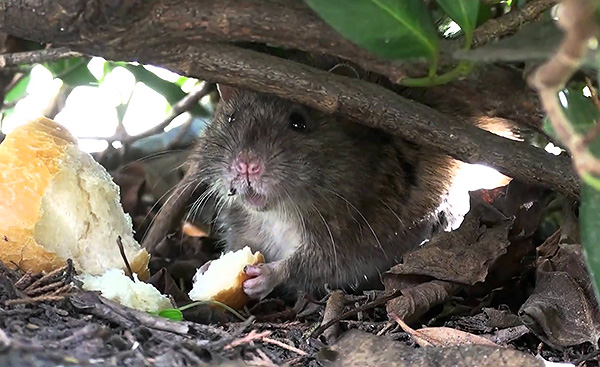
Pasyuki willingly eat fruits, vegetables, grains, groceries, semi-finished products, meat, fish, eggs, milk - absolutely everything that a person eats. However, with a limited choice of food, gray rats can eat only plant foods, and some products of animal origin.
For example, such extreme cases are known:
- On some tropical islands, rat populations have been discovered that never descend from trees to land. For many generations, they live in the crowns of tropical palm trees, eating the core of coconuts and young leaves, only occasionally and with luck, introducing diversity into such a vegetarian diet due to chicks and eggs, as well as shellfish and insects. Although most of these “woody" rats are black, among them there are pasukas;

- Rat settlements were found in industrial freezers in slaughterhouses.Animals lived at a constant temperature of about -18 ° C, arranged nests inside frozen carcasses, lined them with tendon fibers and safely hatched cubs. Their only food was frozen meat, because they could not get out of such chambers and get other food;
- Rats thrive in landfills near slaughterhouses. Here they feed on hides and tripe;

- Pasyuki live on beaches due to sea emissions. They feed on algae, crustaceans, crabs, mollusks, blackfish and eggs of nesting birds here.

In general, the gray rat is a universal consumer consumer. She is able to eat almost everything that can provide her body with calories. With a lack of normal food, animals supplement their diet with tree bark, hay, paper, feces, not to mention grass, carrion, rotting and fermented fruits and vegetables.
It is interesting
Due to omnivorousness, gray rats, by the way, solve their main physiological problem: they are not able to starve for a long time. The maximum animal can stretch without feed 3-4 days. But if the rat has access to dry food (for example, grain), but there is no way to get drunk, it will die only after 2-3 weeks due to dehydration.
In practice, these animals are rarely hungry: they eat mold and moss, lick dew from stone walls in the basement, without a twinge of conscience, swallow the corpses of fallen brothers, digest impurities, and feel great about it.
Often, the rat turns into a formidable predator: the animal can attack ducklings, gnaw membranes on the feet of dormant birds, nibble the skin on the feet of elephants, bite sleeping people. Together with the black rats, the Pasyuki destroyed or contributed to the extinction of dozens of species of birds nesting on remote Pacific atolls: when they got here with random vessels, they switched to feeding eggs in the nests, and the birds themselves, who had never known predators before, had no time to adapt to the threat.
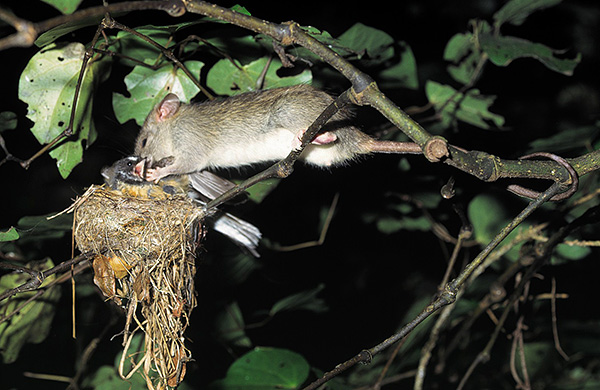
Perhaps only a lack of feed may be the only limiting factor for the distribution of gray rats. That is why they do not live in nature in a temperate climate: in winter, they simply do not find enough food in the snow. At least some food would be available to them at this time of the year - they would live here without fear of cold weather.
It is interesting
Rats do not stockpile food. This is partly why they cannot compete in the natural habitat with rodents in the alpine zone and with the same lemmings in the tundra, and they do not survive where other rodents normally feel - voles, hamsters, gerbils.
But omnivorousness and high adaptability to different conditions are not the only qualities of gray rats that make them prosperous and indestructible ...
The physical abilities of gray rats, or due to which these animals captured the whole world ...
At first glance, gray rats do not have any special physical abilities. They are not great, not strong, they have poor eyesight.
Nevertheless, they use the complex of physical data that nature has awarded them with maximum efficiency:
- Pasyukas have no spatial conservatism, that is, they are not attached to any particular place of life. If animals have the opportunity to move to other places and such a movement is beneficial to them, they boldly settle. Due to this, gray rats spread very quickly throughout the world: some rats penetrated from riverine valleys to fields, their descendants - from fields to villages, descendants of descendants - from villages to cities, then - from cities to ships, and finally - from ships to new cities or uninhabited islands;

- Gray rats are very mobile. The animal can run more than 15 km in a day, and in case of danger it accelerates to 10 km / h, jumps 1 m in length, moves through a wall 80 cm high. The rat is able to crawl into the hole into which its head passes, and if you flush it into the toilet, then it will duck under the water lock and get out;

- These animals swim well - in experiments, the animal could stay on water for 3 days. Sometimes rats catch prey in the water - frogs, water bugs, newts and chicks of waterfowl;

- The experiments confirmed the presence of abstract thinking in rats. The main practical benefit from it is the ability to avoid poison baits;
- Pasyukov has an excellent memory. The animals quickly remember the routes of movement, are well-versed in complex sewage systems, the first time they remember the appearance and smell of poison;
- These animals hear very high sounds - up to 40 kHz (twice as high as the average person can distinguish). Incidentally, this is the basis for the principle of operation of ultrasonic repellers;

- Pasyuki are bold and aggressive. Being driven into a dead end, a gray rat boldly attacks the pursuer, including a man, the female desperately defends the nest. Not all cats can catch rats precisely because of their active self-defense;

- Gray rats normally tolerate a short-term decrease in temperature to -45 ° C and its increase to + 55 ° C, successfully breed in the temperature range from -18 ° C to + 42 ° C in the presence of high-calorie feed and water;
- Pasyuki are very prolific. Each female gives birth from 2 to 20 cubs, those, in turn, become sexually mature at 6 months. 18 hours after giving birth, the female is ready to mate with the males and become pregnant again, on average giving a brood every two months.

It is interesting
Gray rats are known for their resistance to radiation, they normally tolerate radiation up to 300 x-rays / hour. On some Pacific atolls over which atomic bombs were tested, rats were the only surviving mammals.
But perhaps the main advantage of Pasyuk over other animals is their ability to adapt to the neighborhood with humans. When most other species of animals die out under anthropogenic pressure, gray rats thrive in and around human housing, and the living conditions here are even more favorable for them than in the wild in their original habitats.
There, in the wild, for thousands of years of existence, these animals have become neither particularly numerous nor very common. And only having penetrated into human habitation, they began their triumphal procession around the world. We can say that it was a man who made the gray rat his main parasite and competitor ...
In general, an increase in the number of gray rats is an example of the prosperity of a species that has benefited from a change in the environment by humans and which has found itself in ideal living conditions.
Where are gray rats common today?
The gray rat inhabits almost the entire globe, with the exception of the circumpolar regions. It is believed that its original range was in East China, from where the animal began its victorious march around the world. Today, most of the pasyuk lives in Southeast Asia, Central Africa, the southern United States and Western Europe.
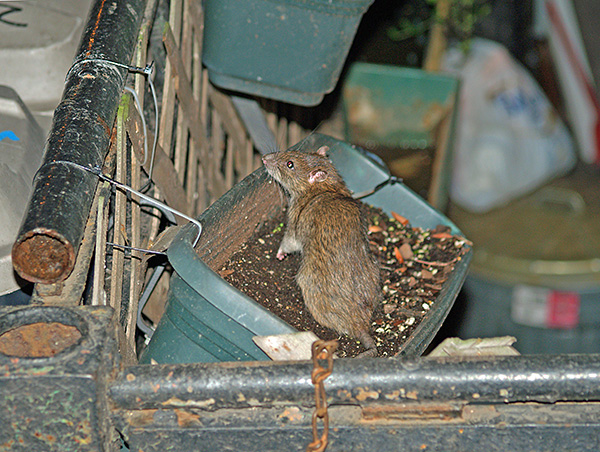
The species range is quite heterogeneous. In many countries, gray rats are found only in cities, in some places they do not exist in vast territories. For example, in the Canadian province of Alberta, this species was recorded only in recent years.
The fact is that the gray rat, which is a cosmopolitan, belongs to synanthropic animals and expands its range precisely in cities and villages. Already from here, in a tropical and subtropical climate, individual animals move into the wild, but this happens slowly, and therefore in many countries the range of animals is a set of points in places of cities and villages against the background of vast spaces on which there are no representatives of this species.
In natural biotopes, a gray rat keeps near water, in moist meadows, in steppe and desert oases.High in the mountains, it does not rise and avoids places with sparse vegetation.
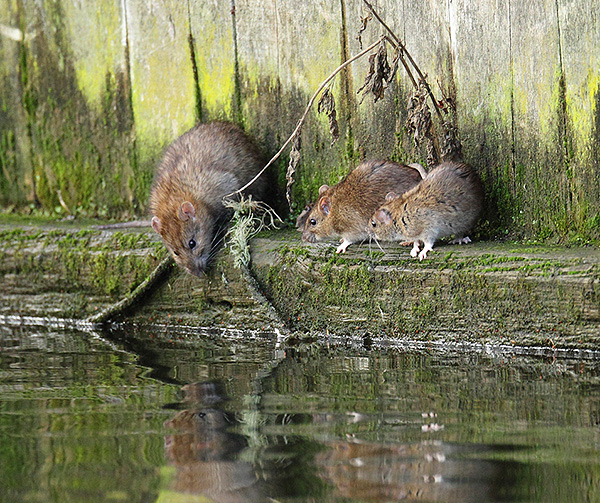
Moreover, in the north, these animals do not leave the city limits at all. In the temperate zone (approximately to the latitude of Saratov), gray rats spend the winter in human habitation, and in the warmer months they settle on agricultural lands. South of the 50th parallel, the Pasyuki form permanent settlements in the wild.
Relationship with the black brother
It is believed that initially (several centuries ago) black rats entered Europe from Asia, which at that time were more common and less dependent on water. They are smaller than gray, actively settle on the upper floors of houses and especially gravitate to life on sea and river vessels. Their last feature caused involuntary travels and their migration, first to Europe, and then to the New World.
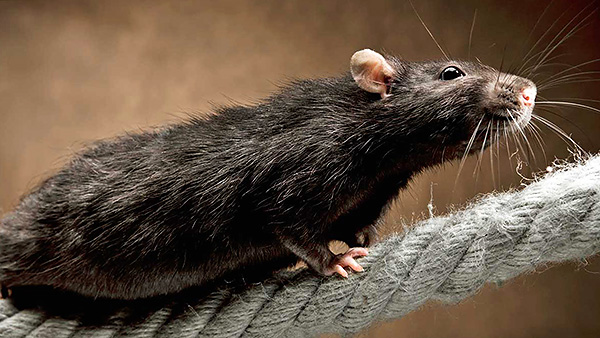
But as soon as gray rats began to get into the port cities of Europe, Black had to make room. This is largely due to aggressiveness, larger sizes and greater fecundity of the gray fellow. In general, crowding out a black rat with gray is an example of interspecific competition: both species feed on the same food and settle in similar places, but with limited resources, the gray rat crowds out the black one, simply depriving it of food and convenient shelters due to rapid reproduction.
However, since gray rats are more likely to live in basements and various agricultural enterprises, while black ones prefer attics and ports, in many habitats these species do not meet and do not compete with each other. To date, in the inner (remote from the sea) cities of Europe, Russia and the United States, the gray rat has almost replaced the black one, and the latter is huddled, perhaps, in the attics of some houses, while in most port cities about 75% of the rats are black.
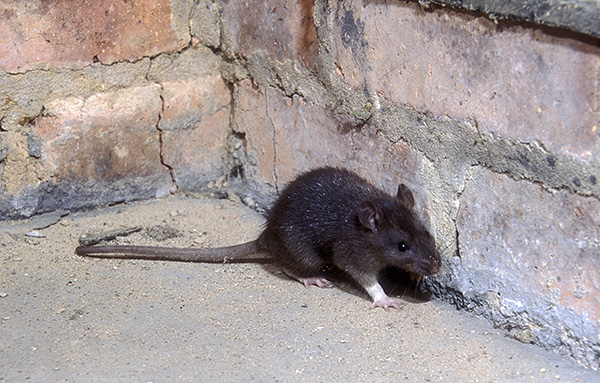
In particular, there are few black rats in Moscow and the Moscow Region, and gray rats are the dominant rodents both in the center of cities and in the provinces.
On a note
It is the gray rat that is otherwise called the pasyuk. Sometimes people call it a barn rat, but in this case collisions are possible: if black rats live in the granary, they will also be called barn. In the villages, the common name for the black rat is roofing, since these rodents actively settle in thatched or reed roofs of houses and sheds. Gray rats avoid height and rarely settle on roofs.
In nature, gray and black rats occupy different ecological niches and do not compete with each other. Black rats do not need water so much, and therefore they live in large numbers in the fields, in the steppes, in gardens, where the gray rat does not penetrate. In addition, the natural range of the black rat is wider: for example, it originally lived in the Crimea and on the Black Sea coast of the Caucasus.
What diseases do these animals carry?
Perhaps most of all, gray rats are dangerous in that they are carriers of various human infectious diseases.
The most terrible plague epidemics in Europe in the Middle Ages, which claimed millions of human lives (according to historians, one sixth of the European population died out of them), arose precisely because of rats.

Fleas parasitizing rodents are carriers of plague sticks, and when rats are housed in houses, these insects actively attack humans and bite them, infecting them with the disease. Moreover, this danger remains today: in many settlements of ground squirrels and gerbils - natural reservoirs of the plague - there are also pasukas that can bring the causative agent of the disease into settlements.
It is interesting
Black rats are more likely to tolerate the plague, but it is the pasukas who played a major role in the spread of epidemics due to their larger numbers.
In addition to the plague, Pasyuk suffer several more deadly diseases:
- Cryptosporidiosis;
- Q fever;
- Typhus;
- Leptospirosis;
- Pseudotuberculosis;
- Sodoku;
- Brucellosis;
- Trichinosis.
Also, most gray rats are infected with helminths, and when products are spoiled by their excrement, the risk of parasite transmission to humans is high. In particular, two types of tapeworms that parasitize on pasukahs are dangerous for people.
Economic significance of a gray rat
Today, the main harm of the gray rat for the national economy is precisely the spoilage of food. Moreover, due to the omnivorous nature of these animals, they harm almost everywhere and at all stages of the technological chains:
- In some regions of Asia, during the years of their surge in numbers, rats completely destroy cereal crops in the fields. In these cases, poor peasants have to get hundreds of pysyukas with sticks and eat them, or take the rats themselves to restaurants for exotic lovers to get a livelihood. According to statistics, only in Southeast Asia, rats eat about 48 million tons of grain annually, around the world they kill up to 30 million tons of wheat and rice annually, and in the Caribbean they get about 10% of the sugarcane crop;

- Rats do harm in storage. They destroy and pollute a huge amount of grain, spoil any food products in warehouses, from fruits and vegetables to groceries, convenience foods and meat;
- Finally, pasyuki are guests of restaurants, canteens and supermarkets. If they cannot get into the kitchens and warehouses, then they feel at ease in the vicinity of garbage containers. And when they nevertheless climb into the kitchens, they not only eat some of the products, but also pollute them with wool and excrement.

Moreover, all the enormous losses are due precisely to the multiplicity of rats. Each individual animal eats not so much per day - about 50-60 grams of food, but hundreds or thousands of them, living in a factory or a transshipment base, take tangible quantities of products from the production process.
In addition, pasukas harm the fact that they cut through the wiring (animals need to constantly gnaw something to grind fast-growing teeth), leading to short circuits, fires and equipment shutdowns, make holes in dams and protective structures, which often causes leaks and accidents. And when they die from poison in houses and office premises, their corpses, decomposing, create conditions unbearable for human life and work.
Pasyuki and domestic (decorative) gray rats
Interestingly, for all its harmfulness, gray rats managed to become pets. Today their numerous decorative breeds are known - white, gray-white, red, black-and-white, husky, hairless, curly-haired and others. You can buy them at any pet store, and the main problem that will arise in a few months is where to get offspring.
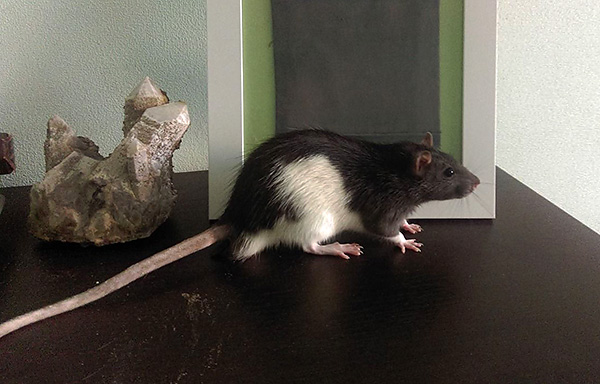
Like wild relatives, in the litter of a domestic gray rat there are from 5 to 20 young rats that grow quickly on domestic grubs and begin to breed at the age of six months.
It is interesting
The natural, "basement" color of the domestic rat is considered to be chic, exclusive. Cubs with such a natural color of fur usually cost more than regular gray-white ones.
Domestic rats easily get used to a person, are not afraid of him, take food from their hands, like to be stroked and easily trained. At the same time, it is difficult to accustom them to the toilet, and therefore a large gray rat rarely becomes a full-fledged pet freely moving around the apartment.
But laboratory gray rats, man owes a lot. It is on them that these or those features of the physiology of mammals are studied, medicine, cosmetics and poisons are tested on them, they allow people to look into the depths of ethology and find remedies for various diseases.
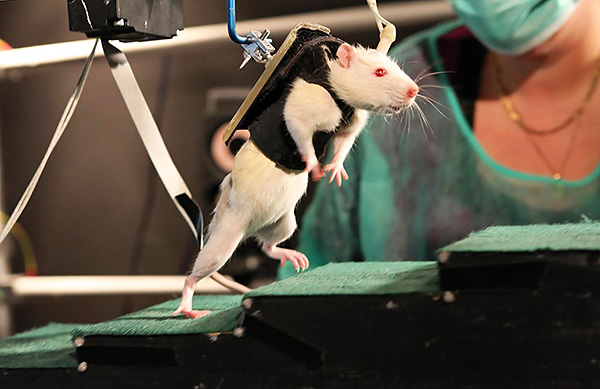
The descriptions of many experiments on gray rats can terrify even people with a strong psyche: they often provoke the development of cancerous tumors in animals or poison them with toxic substances, conduct vivisection. But without such cruel experiments, it is impossible to develop many drugs that save thousands of human lives.Therefore, all the loss of crops and products due to the gluttony of rodents freely living with us can be forgiven precisely for the invaluable contribution to the development of science that their laboratory counterparts make against their will.
An interesting video about the natural life of a gray rat in nature
Rat versus cat - who whom? ..

